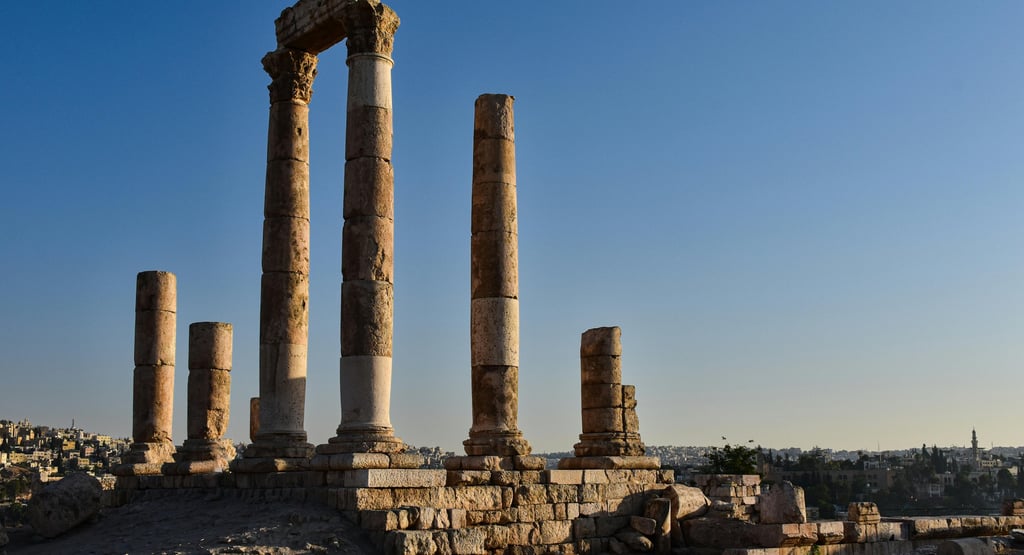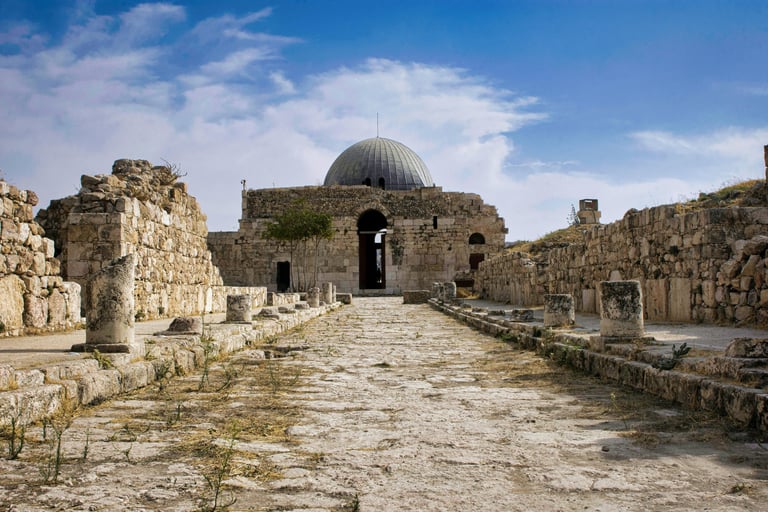Amman – Stones of Kings
Uncover Amman’s regal past through its ancient ruins, vibrant culture, and timeless desert landscapes—a city shaped by kings and history
DESTINATIONS
Jetsclusive
6/25/20255 min read


Amman – Stones of Kings
Rising from the heart of modern Jordan, Amman stands among the oldest continuously inhabited capitals on Earth. At its core, the city’s monuments tell a story written not in books, but in stone. Giant figures carved from basalt and limestone guarded palaces, watchful and silent, revealing royal ambitions, ancestral pride, and sacred beliefs. These iconic “Stones of Kings” mark Amman not just as the center of a kingdom, but as a cradle of royal power that still shapes the city’s identity today. For anyone drawn to history, the mystery and grandeur of these ancient relics offer a window into the world of kings, gods, and the people who honored them.
The Ammonite Kingdom: Stones, Kings, and Divine Legacy
Long before Amman grew into a bustling metropolis, it was known as Rabbath Ammon, capital of the Iron Age Ammonite kingdom. The city was more than a political hub. It served as a sacred ground where stone statues proclaimed the authority of kings and the favor of gods.
These statues, some towering over two meters tall and weighed down by history as much as by stone, did more than decorate. They spoke of ancestry, legitimacy, and the unbroken line from ruler to ruler. Their presence in temples and public spaces was a living reminder that Ammon was protected and governed by leaders with both royal and divine claims.
Compare Private Jet Pricing To Amman Here Powered by Villiers Jets — Trusted by 1,000+ flyers worldwide
Iconography and Meaning of Amman's Statues
Take a closer look at these sculptures, and every detail has a meaning. Thick, stylized beards marked adult men of high status and wisdom. Headgear ranged from crowns to the ceremonial “atef” hats, echoing Egyptian influence but adopted for local kingship.
Some statues hold their arms crossed or extended, signaling ritual gestures or readiness to give offerings. Lotus flowers, carved into bases or held in hands, hinted at renewal and eternal life. All these features worked together as ancient branding, making sure viewers saw the figure as both ruler and holy ancestor.
Artisans were not copycats. While they borrowed artistic cues from Egypt and Mesopotamia, they forged their own style. Robust bodies, solemn faces, and a calm dignity separated Ammonite royal images from their neighbors. Their expressions, always restrained, conveyed quiet authority and endurance.
Royal Ancestor Cult and Divine Kingship
These stones were key players in the rites of kings. The Ammonite royal cult fused monarchy with religion, treating past kings almost like saints. Statues of rulers, placed in temples or special shrines, became objects of rituals praising royal ancestors and asking for their blessing or intervention.
Offerings at these sites might include food, pottery, and incense, all meant to honor the memory of departed kings and keep their spirit alive in the life of the city. People believed that strong ties to sacred ancestors enhanced the power and favor of living kings—a feedback loop linking present to past and crown to divinity.
Public ceremonies often featured these statues, so any visitor or subject witnessing them would see kingship as something ancient, unbroken, and protected by both lineage and the gods.
Inscriptions and Political Power
Words mattered as much as images. Many stone statues and steles carry lengthy inscriptions—some in Ammonite, others in neighboring scripts. These lines recorded the names, achievements, and genealogies of rulers. Mention of divine support or ancestry gave each king gravitas and an air of destiny.
The colossal statue uncovered at the Amman Theatre, for example, bore names and titles meant to broadcast the legitimacy of the Ammonite dynasty. Similar to the famous Mesha Stele from nearby Moab, these inscriptions didn’t just list victories or construction projects. They called on gods as witnesses, wove in blessings, and anchored the king’s right to rule in a world both secular and sacred.
Amman's Stone Monuments Through the Ages
Amman’s history doesn’t stop with the Iron Age. Every generation that followed added, recycled, or rebuilt monuments using the city’s most lasting resource—stone. The meanings shifted, the rulers changed, but the symbolism persisted.
Romans built grand temples and theaters on top of ancient Ammonite sites. Byzantine Christians left mosaic churches, while early Muslims erected palaces and mosques, all drawing from the energy lingering in old stones.
The Citadel and the Roman Theatre: Icons of Urban Heritage
The Amman Citadel, perched on Jabal al-Qal‘a, remains the city’s most enduring landmark. Its layers include Bronze Age walls, Ammonite fortresses, Roman colonnades, Byzantine churches, and the domed Umayyad Palace.
Among the most striking sights:
Temple of Hercules: Roman columns and a massive marble hand (once part of a giant statue) point to Rome’s grand ambitions in Jordan.
Umayyad Palace: Early Islamic architecture at its finest, combining tradition and innovation.
Byzantine Church: Mosaic floors and scattered columns reveal the Christian presence, echoing past rituals where kings and saints shaped local faith.
Down the slope, the Roman Theatre hosts cultural events to this day, continuing the ancient tradition of using stone spaces to gather people, tell stories, and channel authority.
Compare Private Jet Pricing To Amman Here Powered by Villiers Jets — Trusted by 1,000+ flyers worldwide
Continuity and Change: Cultural Layers in Stone
Amman’s monuments read like a stacked library, each era piling new meanings atop the old. Ammonite statues may have faded from public view, but later builders seldom erased what came before. Instead, the city’s powerful locations were recast for new rulers and faiths.
Romans reused Ammonite foundations for their temples and theaters. Byzantine Christians claimed the same sites for churches. Umayyad Muslims built their palaces around ancient walls, respecting the power of place.
This reuse is not just practical recycling. It’s a celebration of Amman’s royal stones as markers of memory and identity. Today, these layers serve as Jordan’s ultimate time capsules—physical proof of how kingship, power, and faith have shaped the city.
Key Points:
Amman’s limestone and basalt statues once marked sites of kingly and divine power.
Successive civilizations adapted these sites, building new monuments but preserving the symbolic core.
The city’s heritage industry, museums, and guided tours now bring these stories to light for citizens and visitors alike.
Conclusion
Amman’s monumental stones outlasted the kings, priests, and armies who set them up thousands of years ago. These silent witnesses still watch over the city, shaping stories of royal ambition and sacred continuity. Every surface, from battered steles to towering columns, helps us picture not just one history, but many.
In today’s Amman, these “Stones of Kings” play a new role—fueling pride, attracting visitors, and connecting daily life to the deep roots of the city. For anyone curious about how power is built, performed, and remembered, Amman’s stones offer clarity: kings rise, dynasties fall, but the stones remember—and invite us to remember, too.


Luxury
Explore the world of private aviation and travel.
support@jetsclusive.net
© 2025. All rights reserved.
